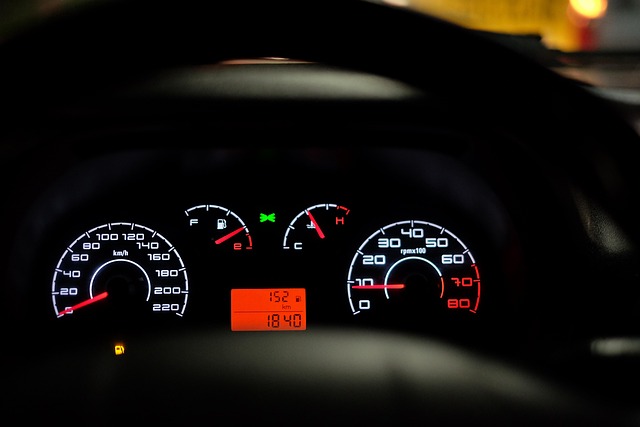Looking to register your car in California? Navigating the process can seem daunting, but with the right guide, it’s straightforward. This comprehensive article walks you through every step, from understanding the California vehicle registration process and gathering required documents to performing essential VIN verification and choosing the best registration method. Learn from common pitfalls to ensure a smooth experience.
- Understanding the California Vehicle Registration Process
- Gather Necessary Documents for Car Registration in CA
- Perform VIN Verification: Steps and Requirements
- Choosing a Suitable Car Registration Method
- After Registration: Important Tips and Common Pitfalls to Avoid
Understanding the California Vehicle Registration Process

Understanding the California Vehicle Registration Process
In California, registering a car involves several steps that ensure vehicle safety and roadworthiness. The process begins with gathering essential documents, including proof of ownership, identification, and insurance. Once these are in order, the next crucial step is VIN (Vehicle Identification Number) verification. This involves checking the vehicle’s history to confirm its authenticity and compliance with emission standards. For convenience, many opt for a mobile vin verification or vin inspection service, allowing them to complete this process efficiently from the comfort of their home or workplace.
After successful VIN verification, you can proceed to visit a California Department of Motor Vehicles (DMV) office or use their online services to register your vehicle. This includes submitting the necessary forms, paying the registration fees, and providing additional details about the vehicle’s specifications. It’s important to remember that certain fees and requirements may vary depending on factors like the type of vehicle and its age. Following these steps ensures a smooth car registration process in California.
Gather Necessary Documents for Car Registration in CA

Before you start the registration process, it’s crucial to gather all the essential documents required by the California Department of Motor Vehicles (DMV). This includes your vehicle’s Registration Application (Form DVF 140), which can be obtained online or from any DMV field office. Additionally, you’ll need proof of identity and residency, such as a valid driver’s license or state ID card, recent utility bill, or lease agreement.
Another vital step is ensuring accurate and up-to-date vehicle information, especially the Vehicle Identification Number (VIN) during the vin verification process. You can conduct a VIN inspection using a mobile vin verifier to cross-check the details with the DMV’s records. This is particularly important for protecting against fraud and ensuring you register the correct vehicle. Keep in mind that having these documents ready will make your car registration experience in California smoother and more efficient.
Perform VIN Verification: Steps and Requirements

Before registering your car in California, it’s crucial to perform a Vehicle Identification Number (VIN) verification. This process ensures that your vehicle matches the information on its registration documents and helps prevent fraud. Here’s how to do it:
1. Obtain Your VIN: Find the 17-character unique identifier located on the vehicle’s certificate of title, or check your car’s door jamb, engine hood, or dashboard for a sticker with the VIN.
2. Use a Mobile VIN Verifier: For convenience, many residents opt for a mobile vin inspection service. These apps or services allow you to input your VIN and receive instant verification, confirming that your vehicle’s details match the state’s records. Alternatively, you can visit a local California Department of Motor Vehicles (DMV) office and have them perform a vin verification in person.
Choosing a Suitable Car Registration Method

Choosing a suitable car registration method is an essential step in ensuring a smooth process and avoiding potential issues down the line. In California, residents have several options, from traditional in-person visits to innovative mobile services like VIN verification. Understanding your needs and preferences will guide you in making the right choice.
One popular modern approach is utilizing mobile VIN verifiers, which offer convenience and speed. These services allow you to complete a VIN inspection remotely, ensuring all vehicle details are accurately checked against state records. This method is especially beneficial for those with busy schedules or limited mobility, as it eliminates the need to visit a DMV office. Alternatively, traditional in-person registration involves visiting a local California DMV branch, where an inspector conducts a thorough check of your vehicle’s documentation and history.
After Registration: Important Tips and Common Pitfalls to Avoid

After registering your car in California, it’s crucial to stay informed about key steps and potential pitfalls to ensure a smooth ownership experience. One important tip is to maintain accurate records, including keeping digital or physical copies of all registration documents, receipts for any related transactions, and proof of insurance. Additionally, promptly updating your address with the Department of Motor Vehicles (DMV) is essential to avoid any communication disruptions.
A common pitfall to avoid is neglecting regular vehicle maintenance and inspections. California law mandates certain safety checks, so always stay current on these requirements. Utilize tools like mobile vin verification or a vin inspection service to ensure your vehicle meets all standards. Regularly checking for recalls specific to your car model is another vital step, as it helps identify potential safety issues that can be addressed promptly by dealerships or authorized service centers.
Registering a car in California involves understanding the process, gathering essential documents, and completing a VIN verification. By choosing the right registration method and being mindful of potential pitfalls, you can ensure a smooth experience. Remember, accurate and up-to-date information is key to avoiding delays and issues down the line. Happy motoring!
